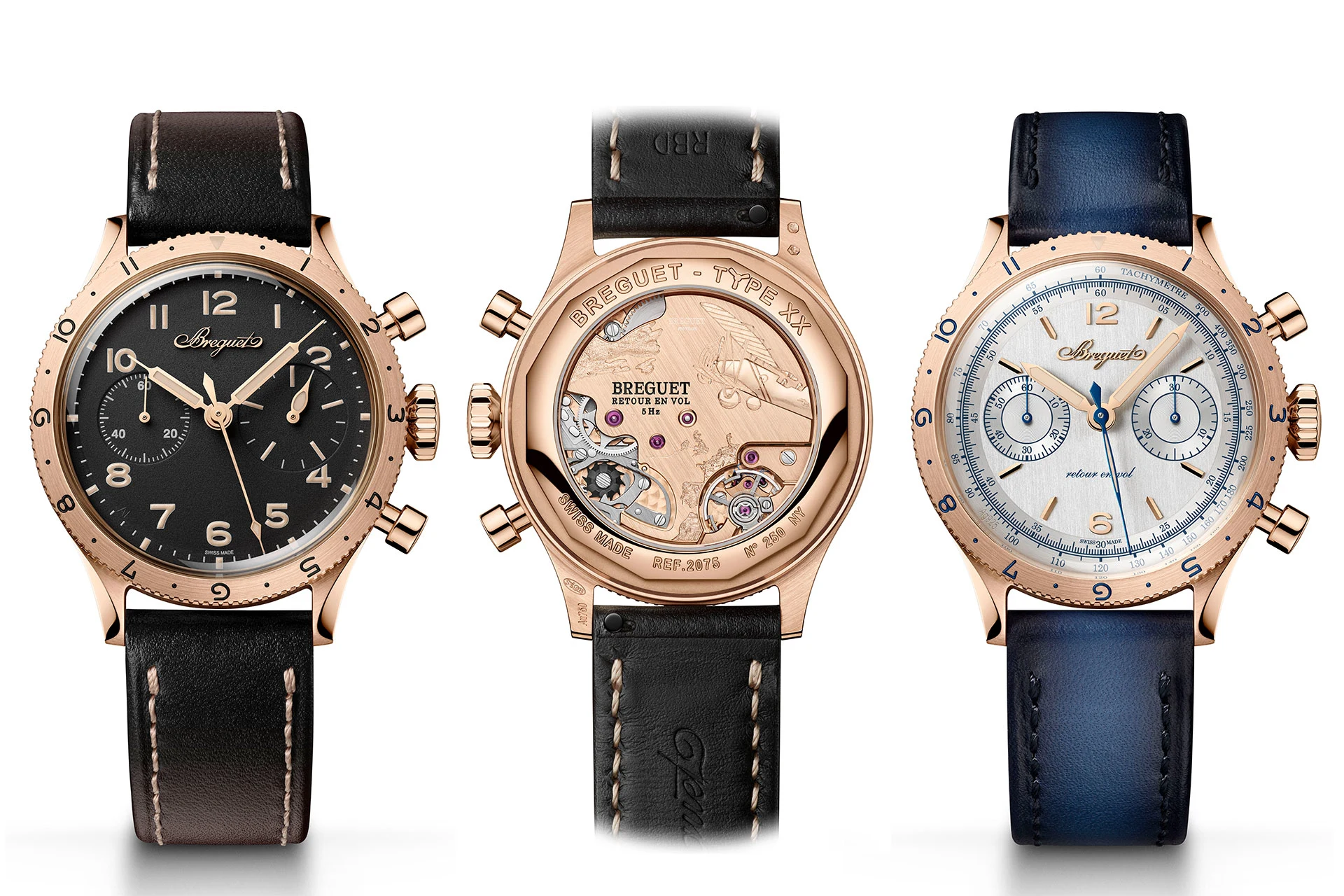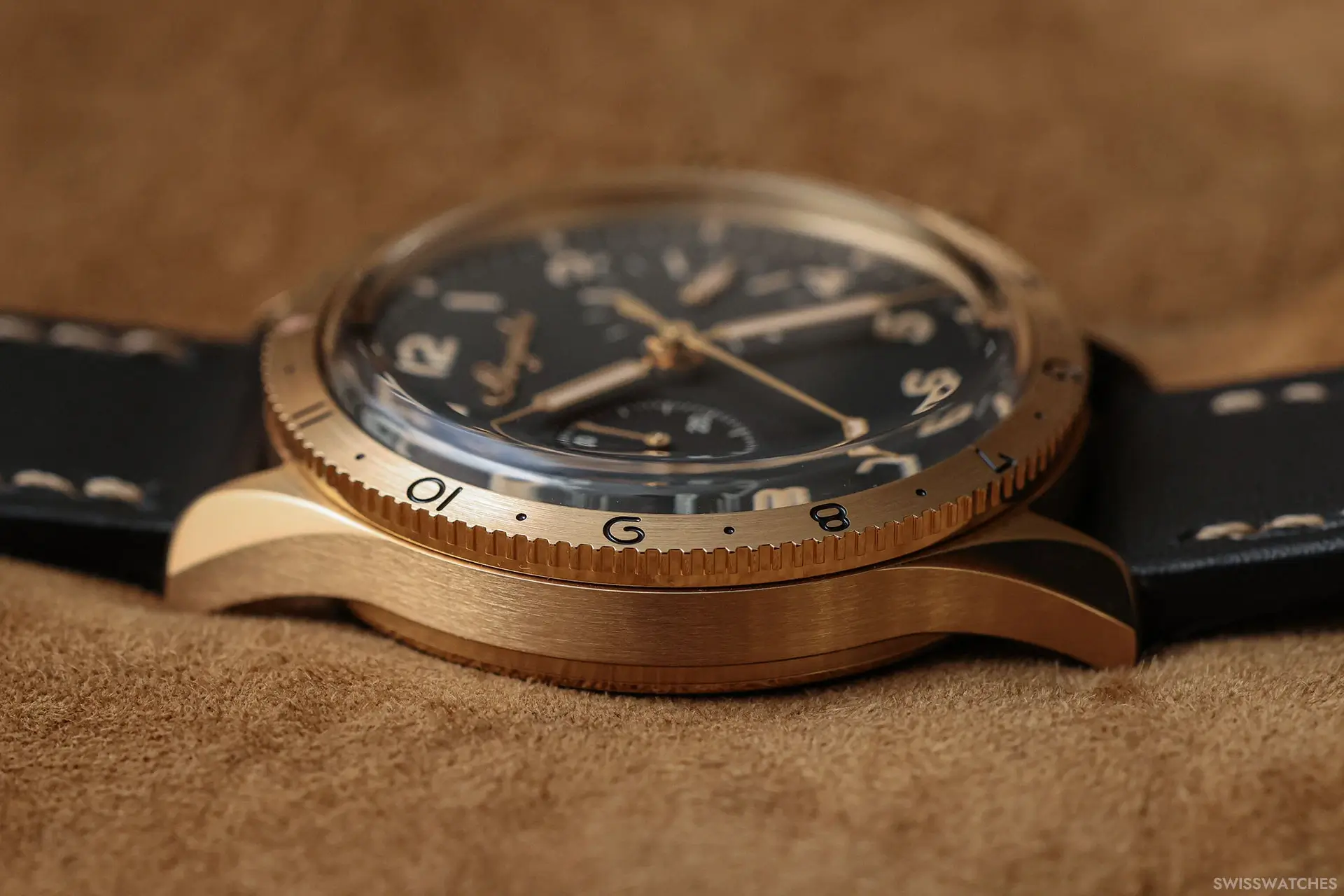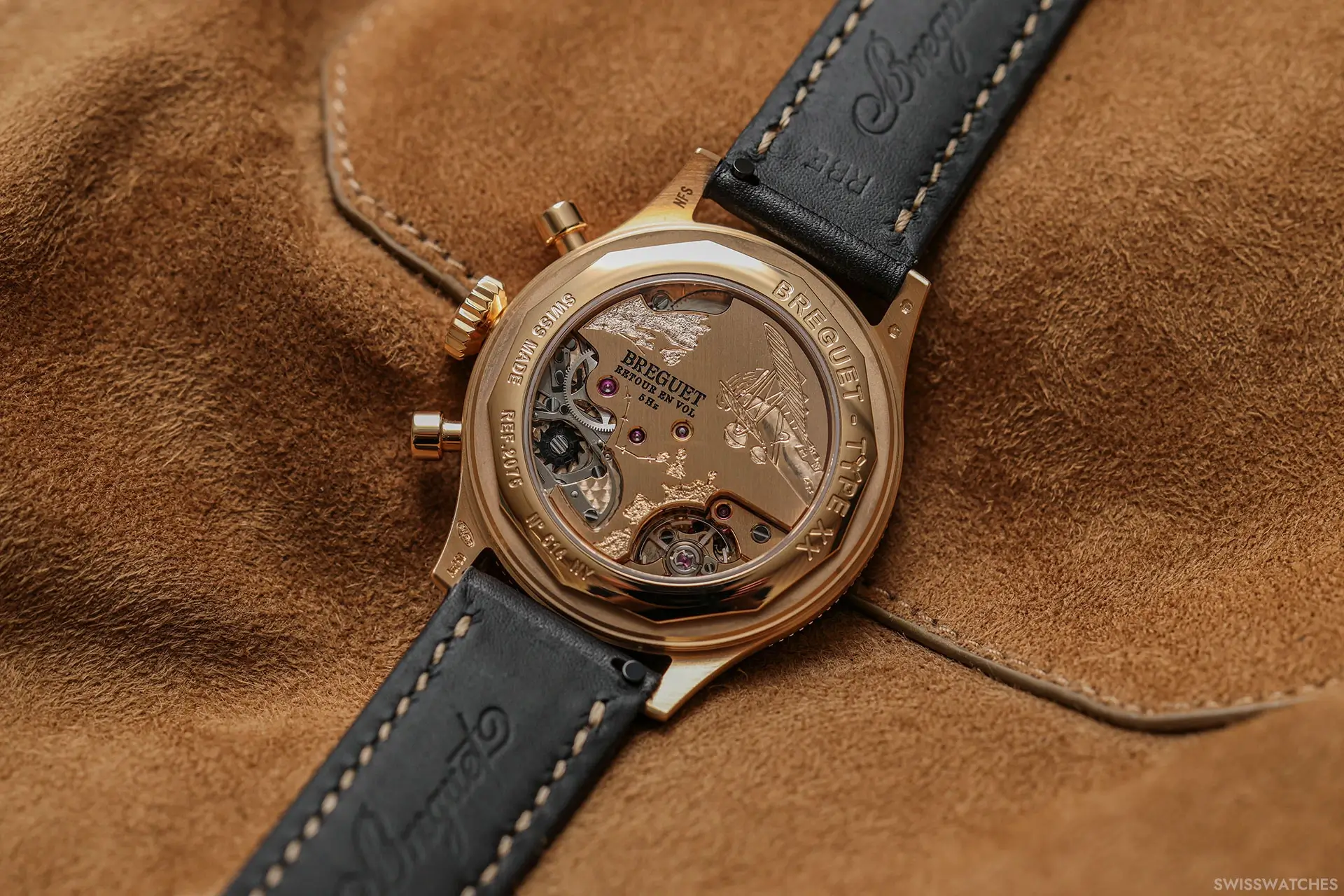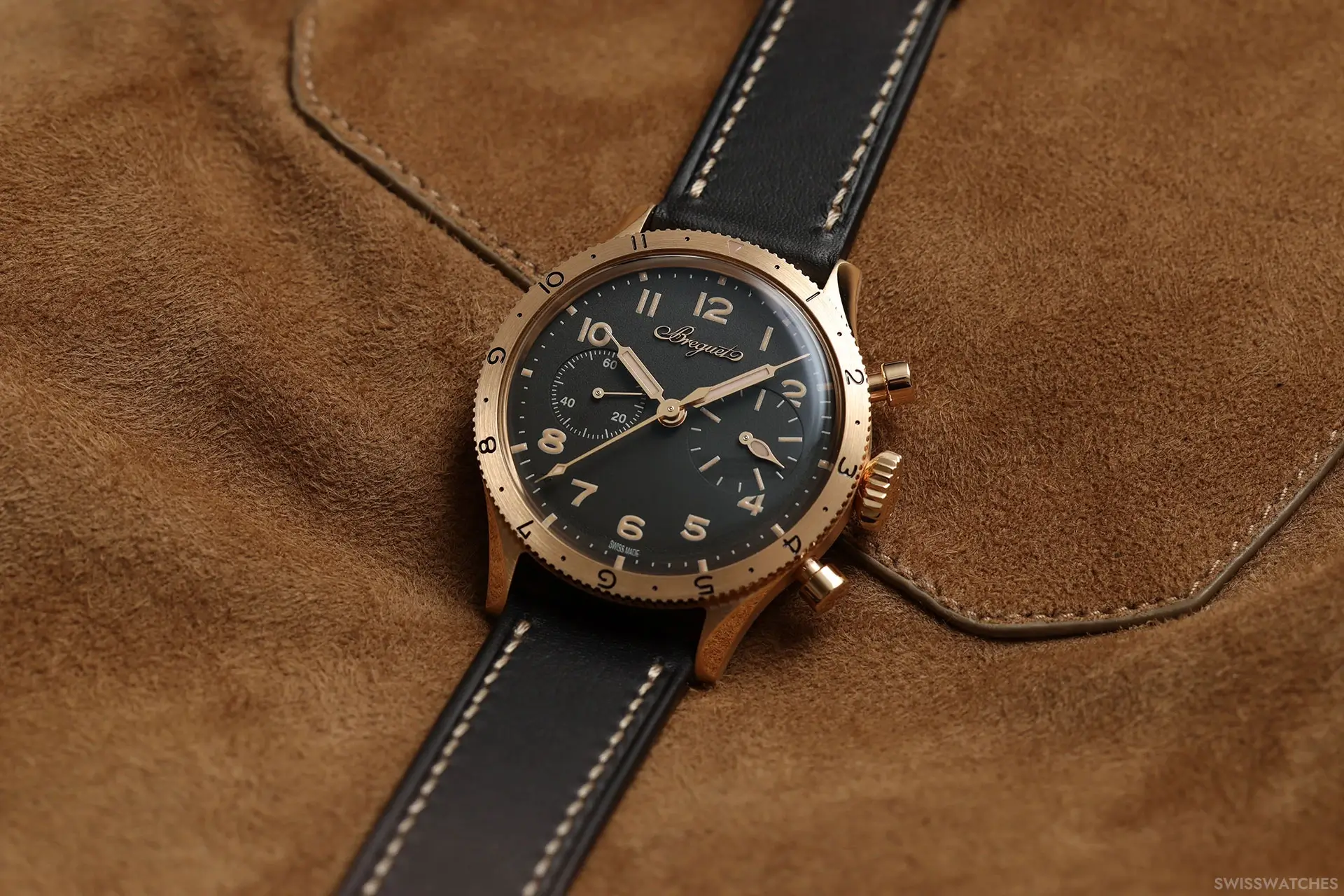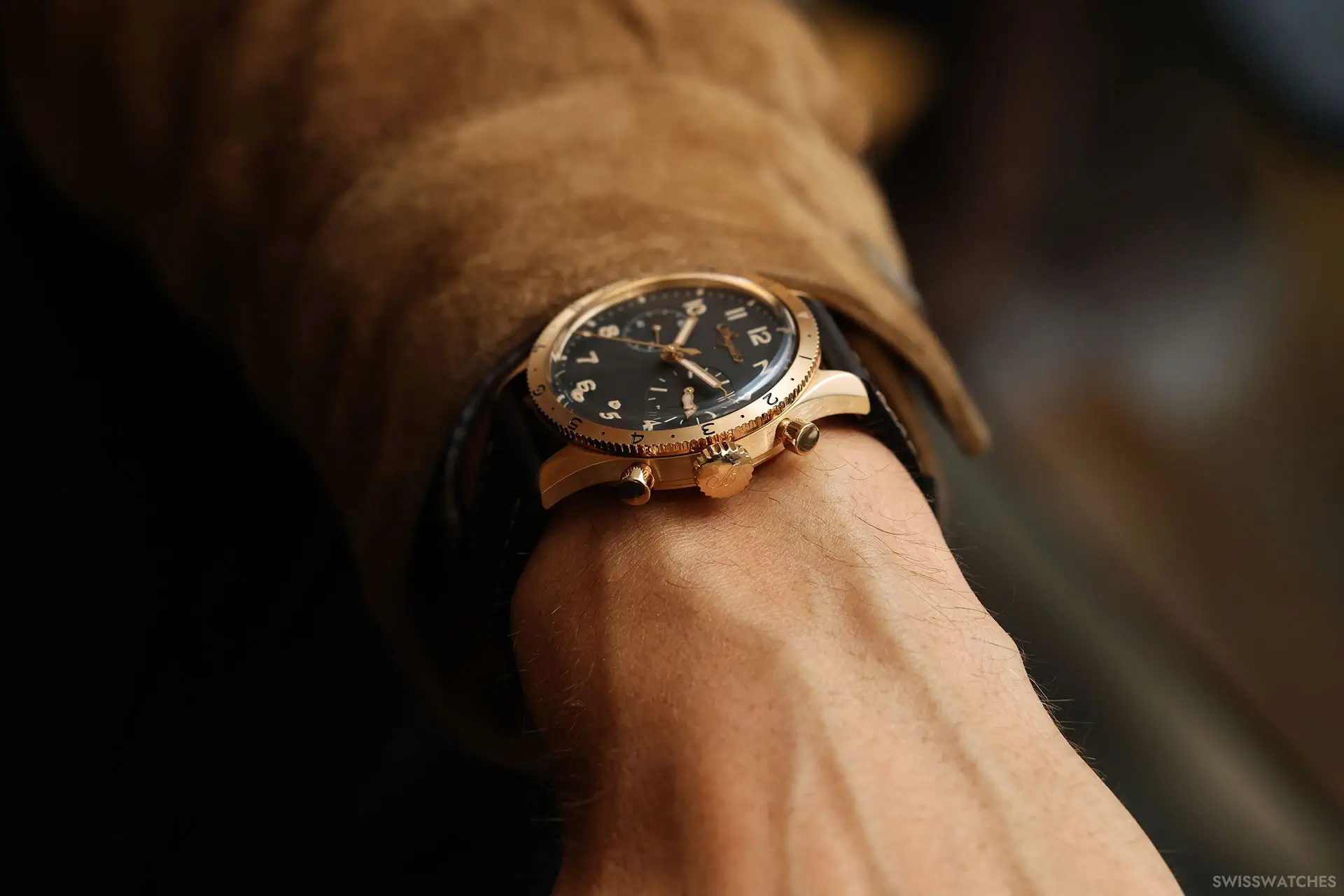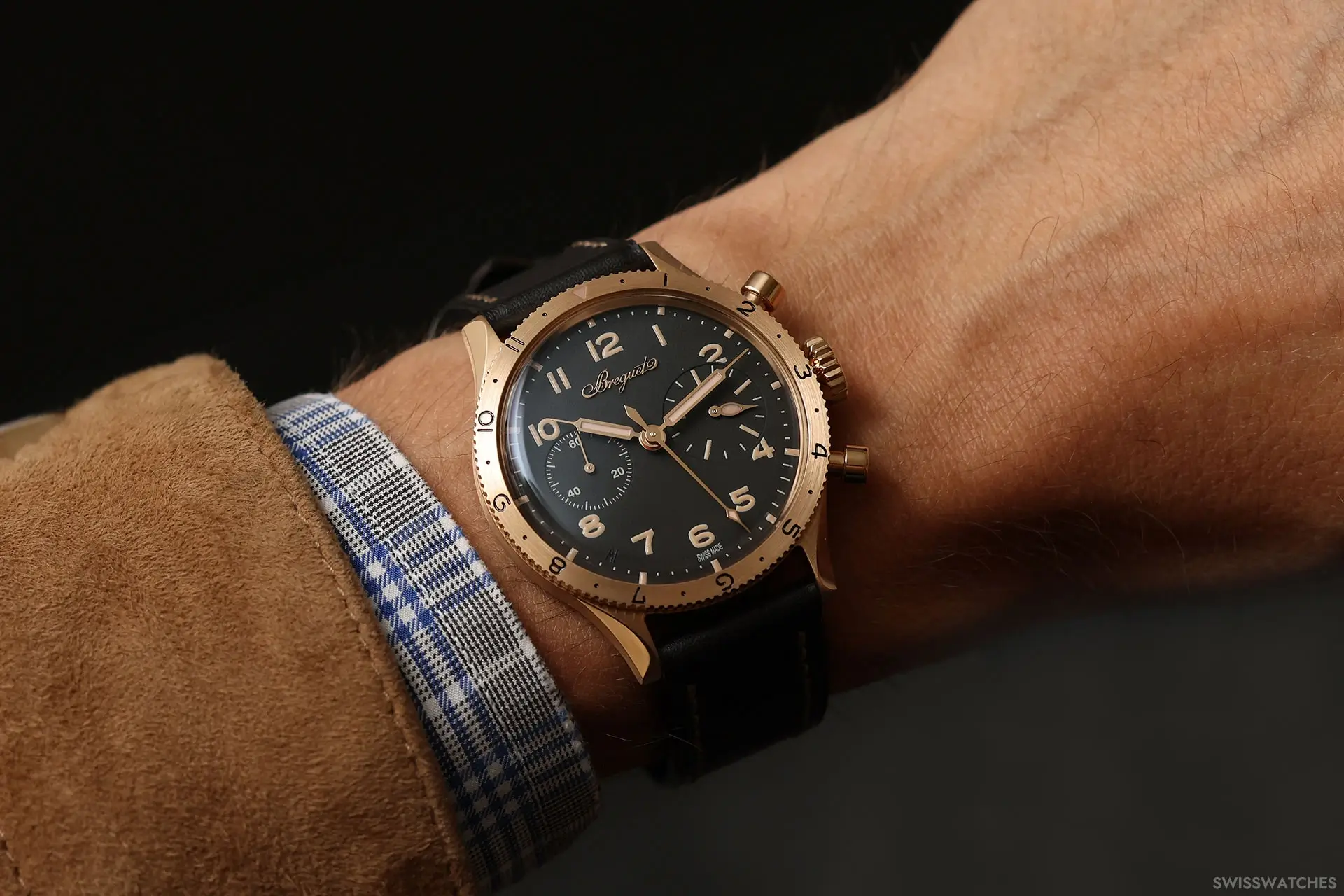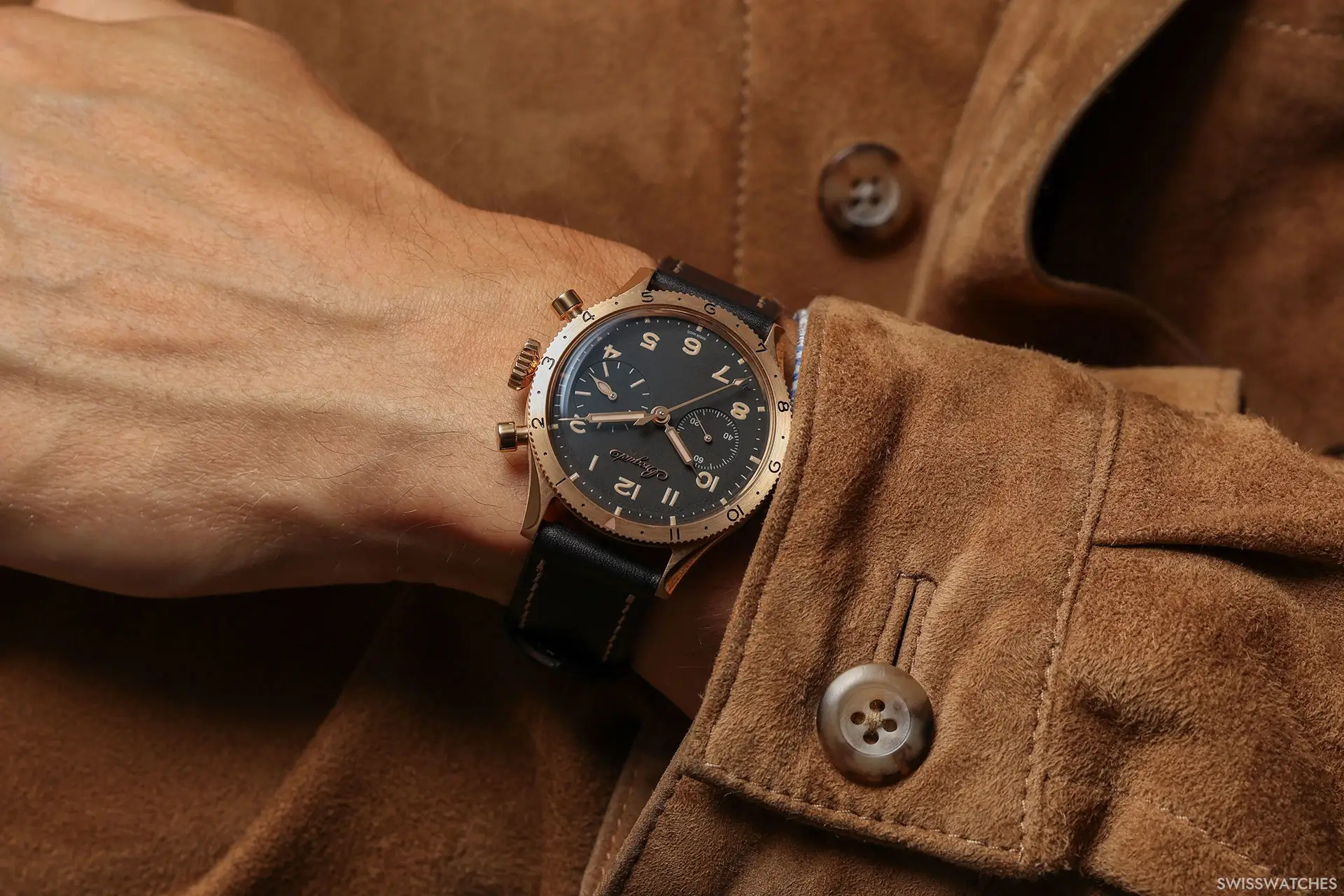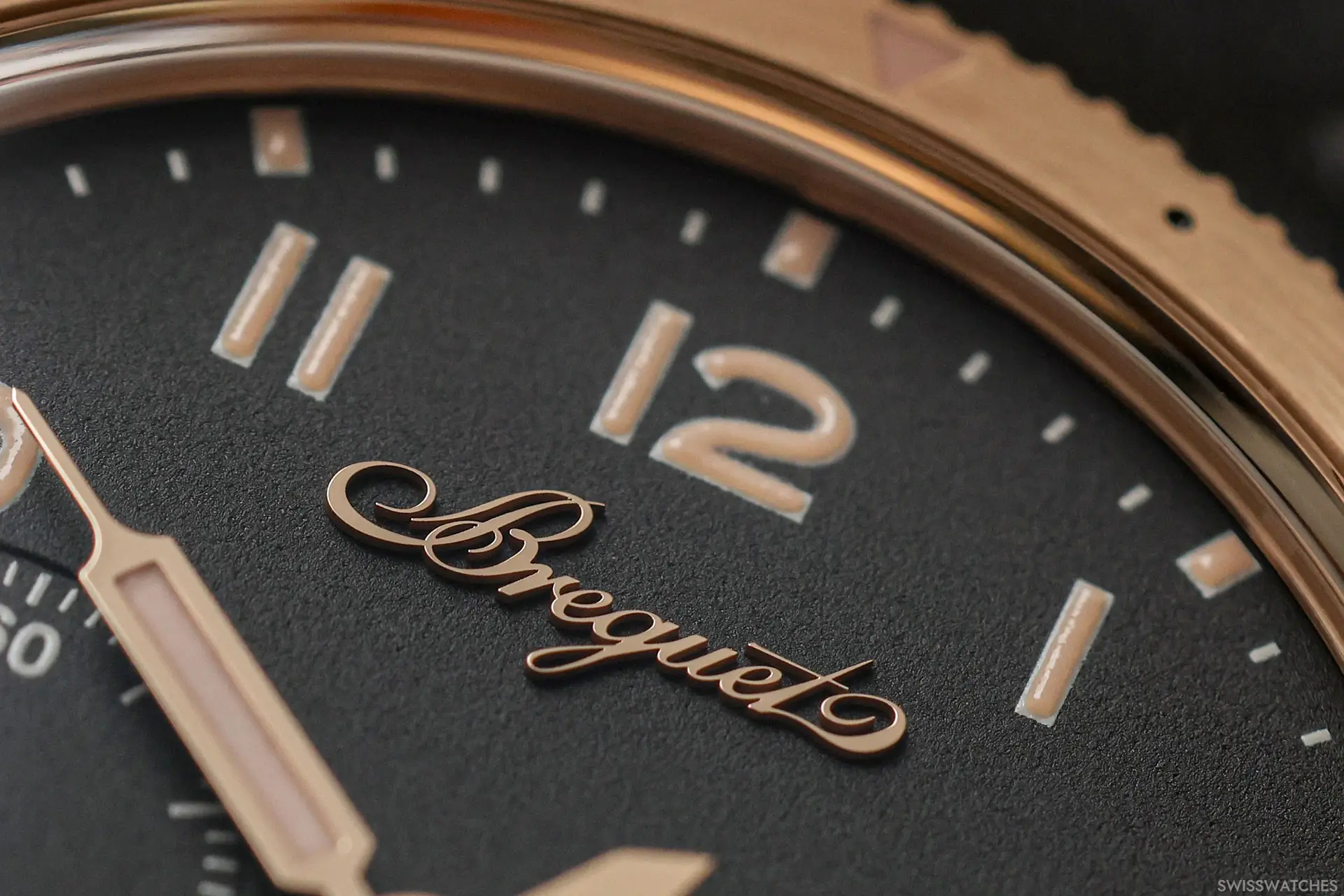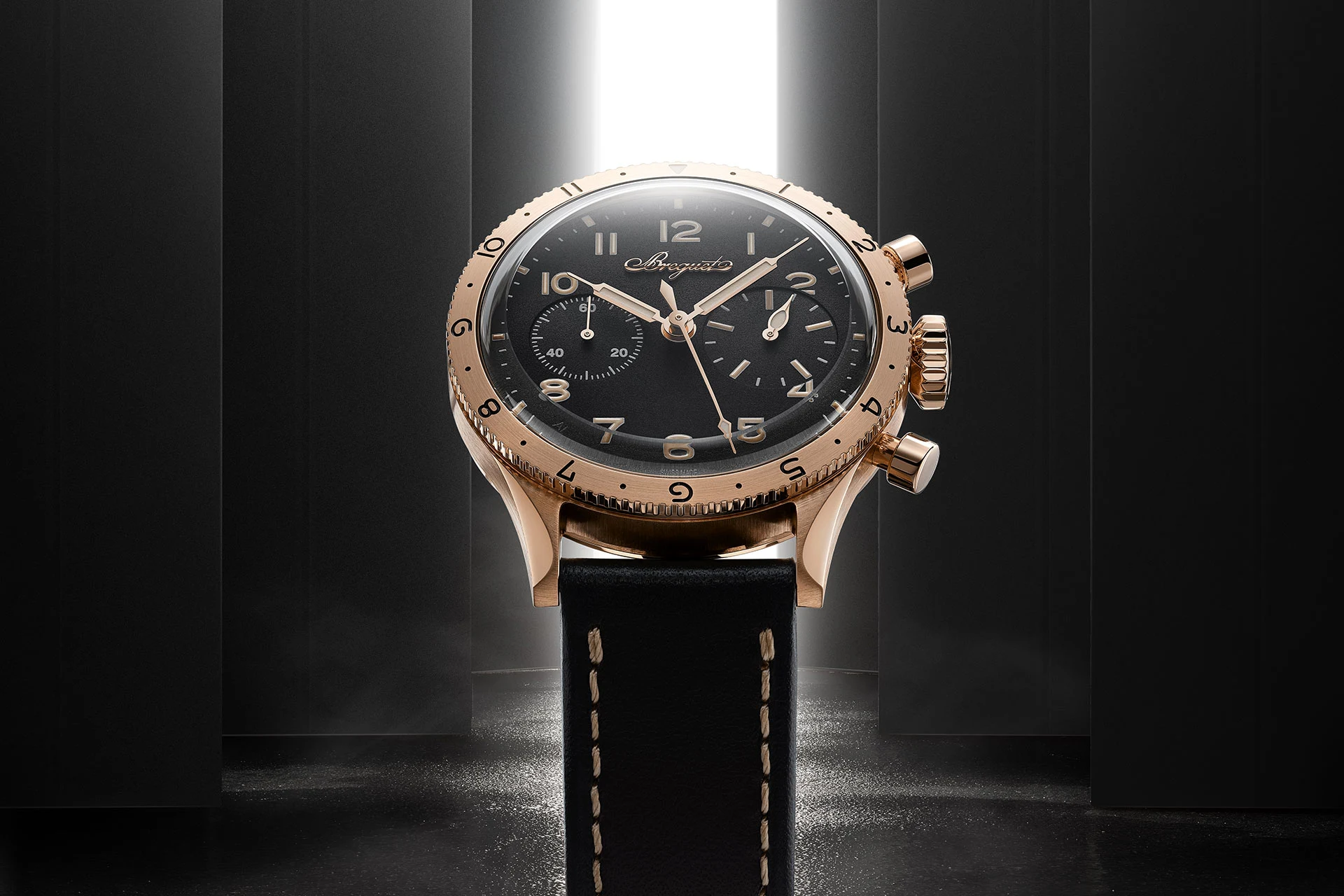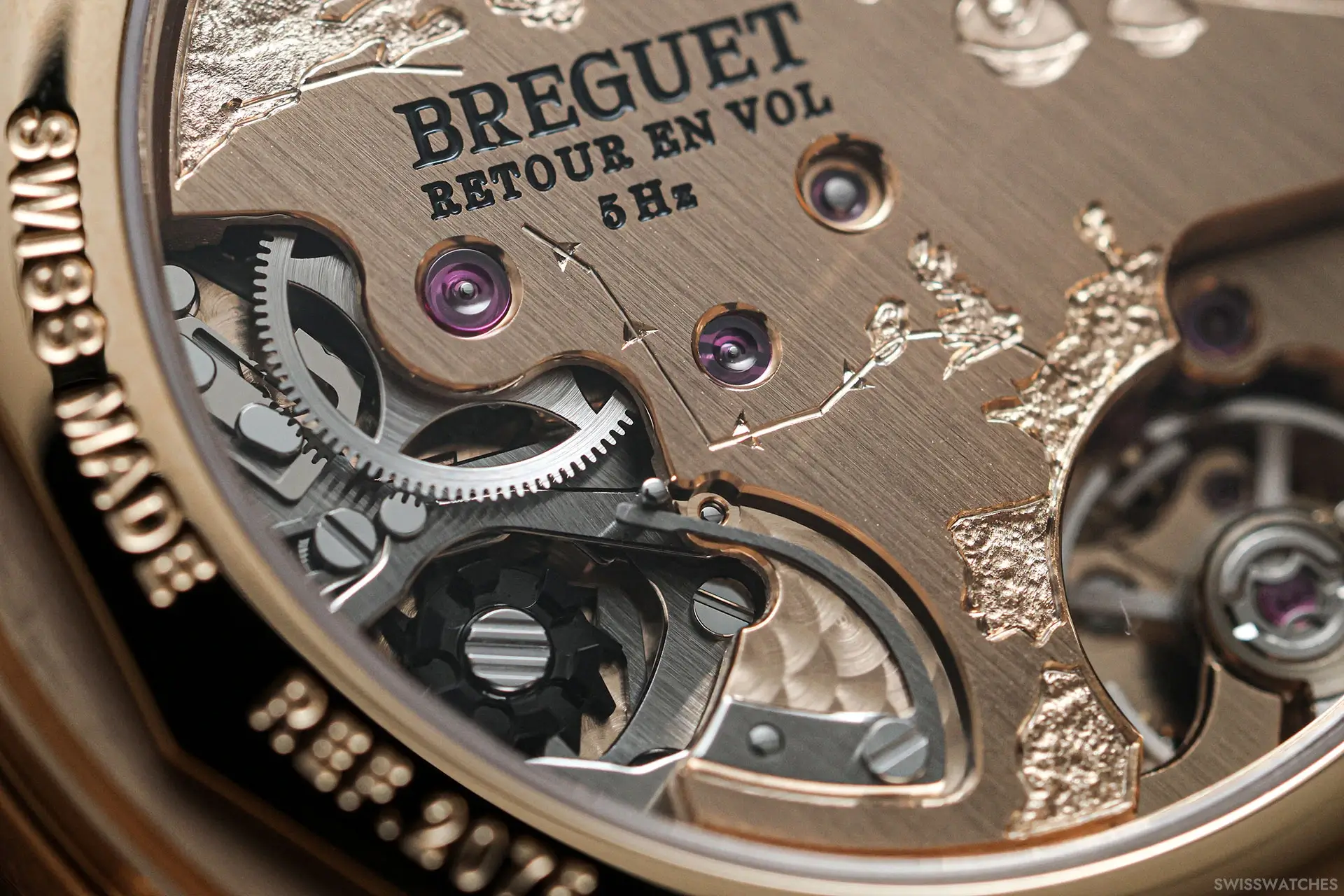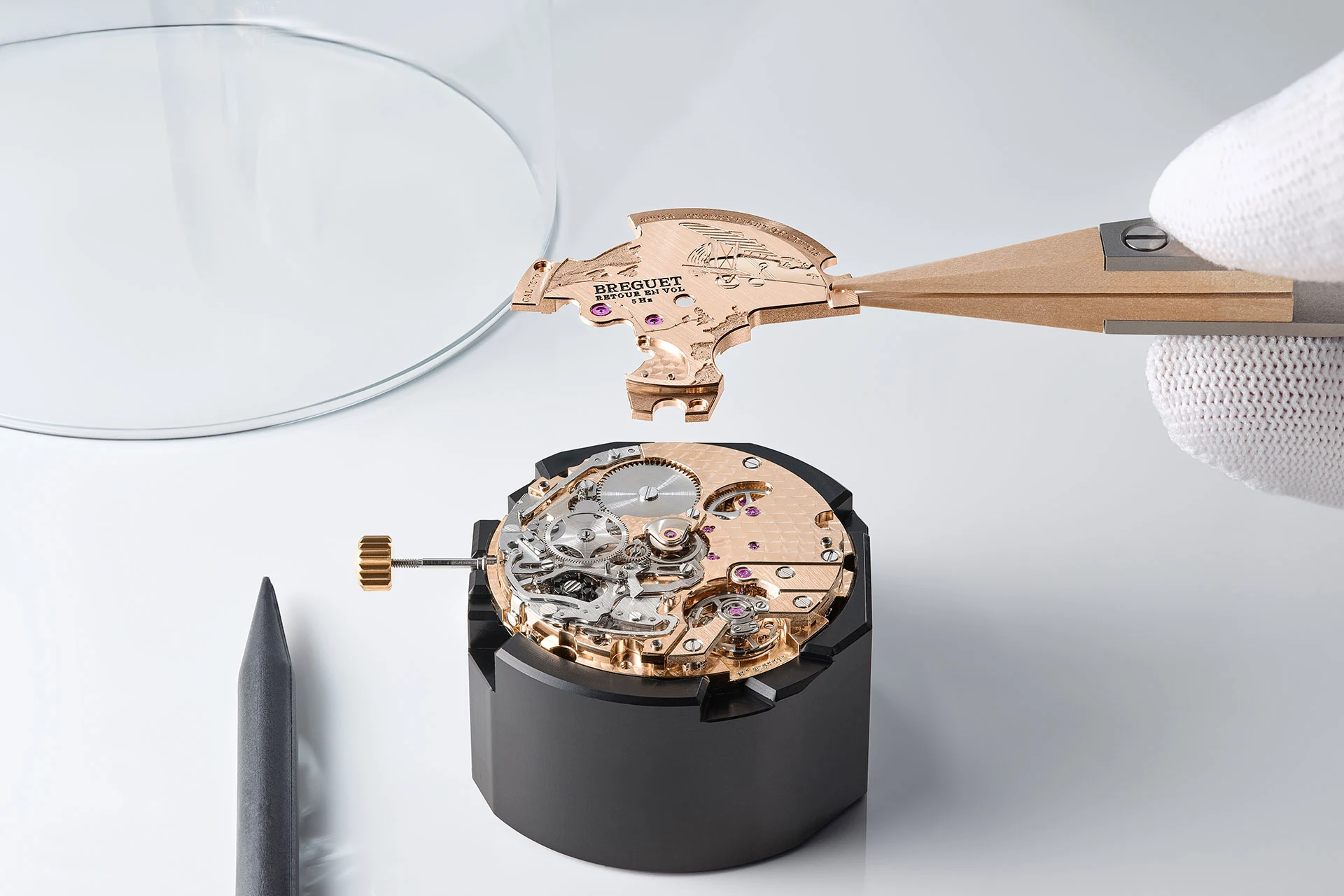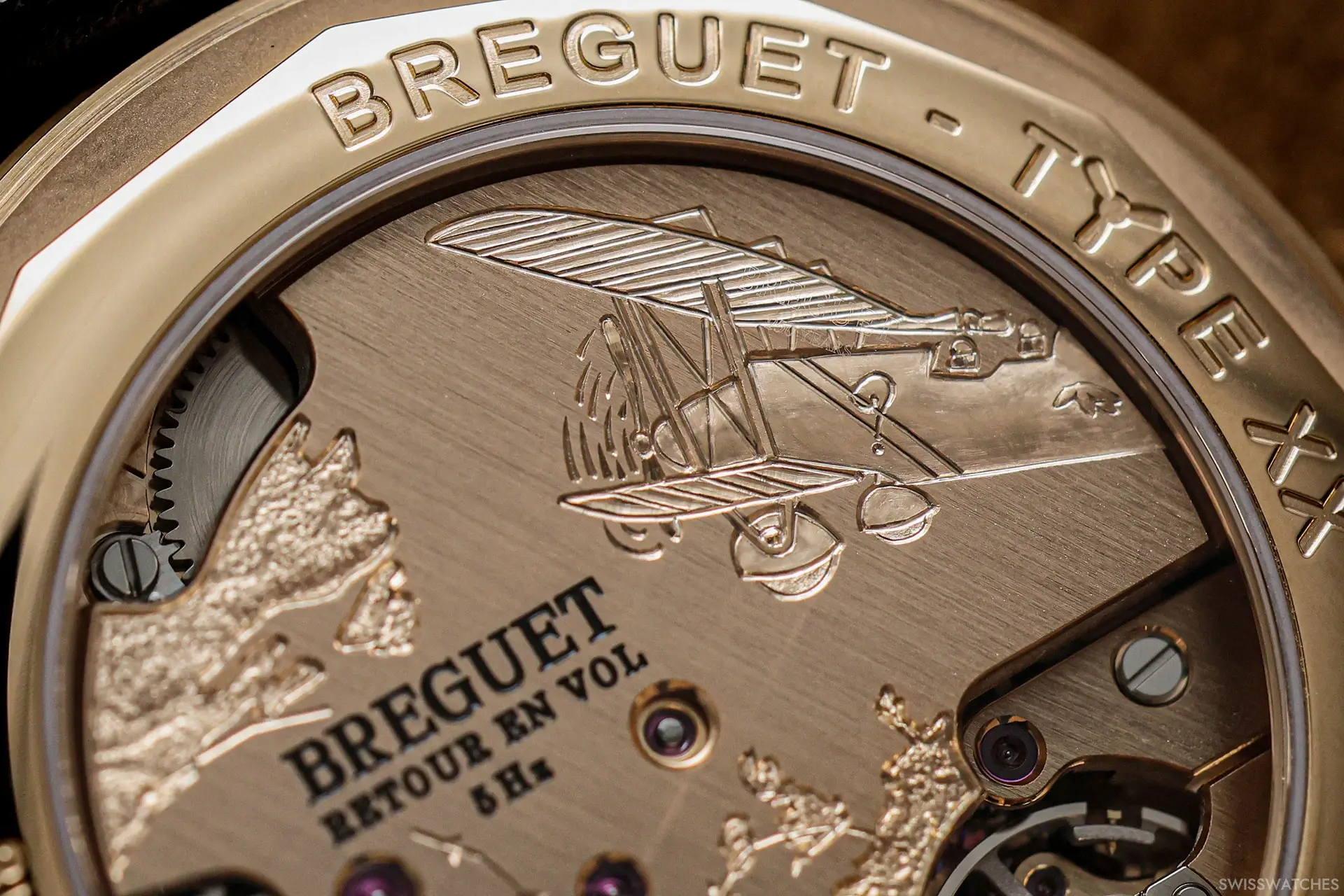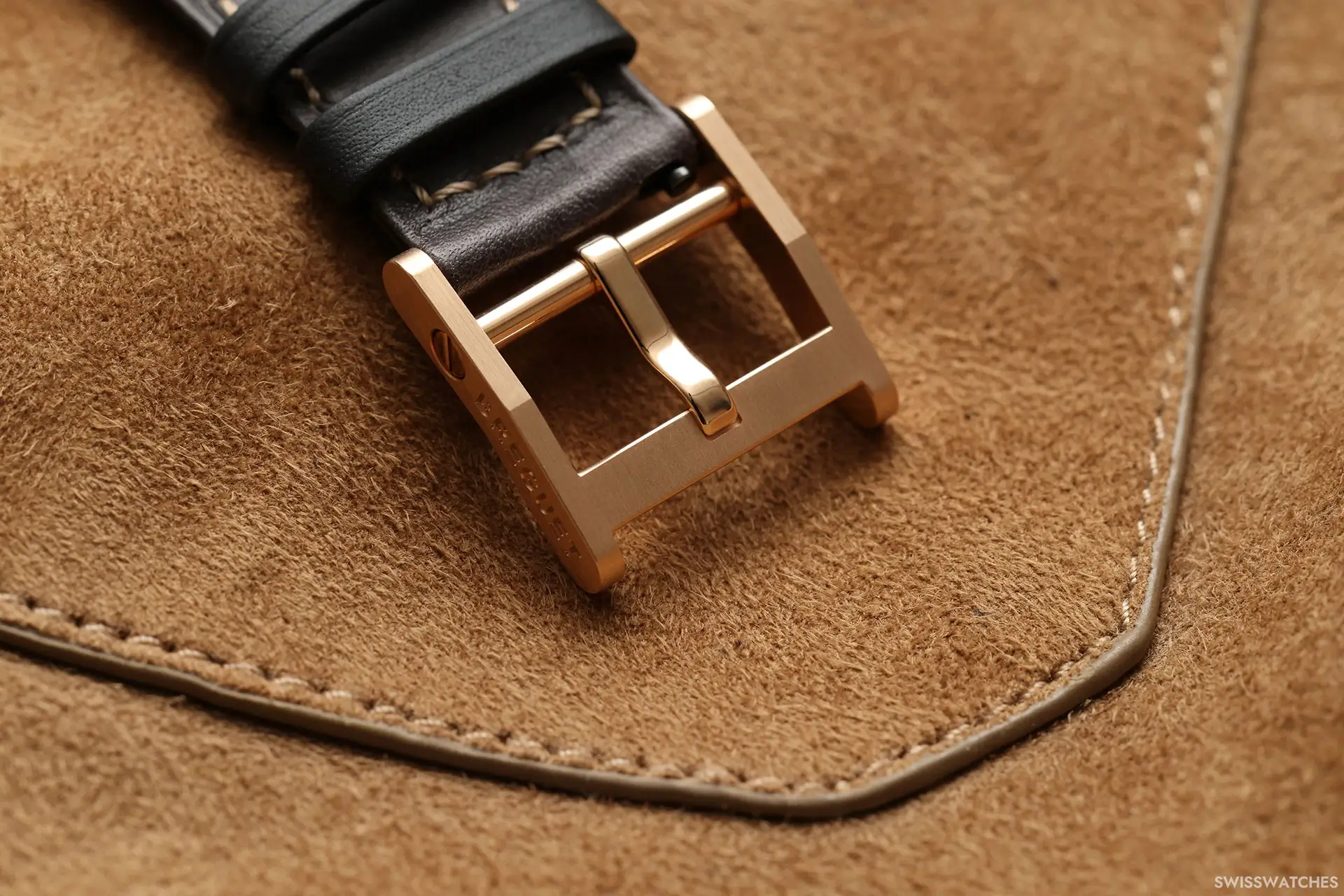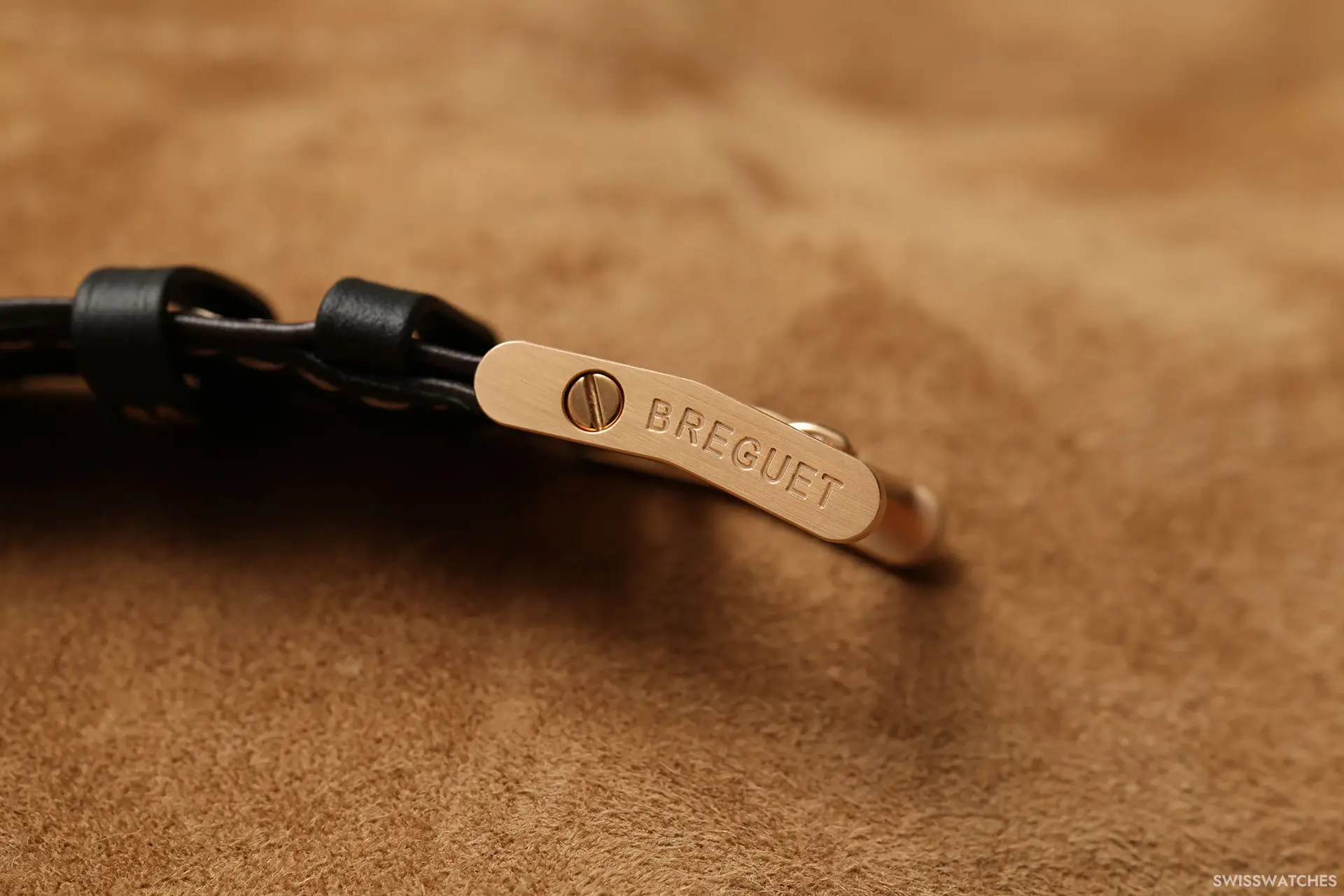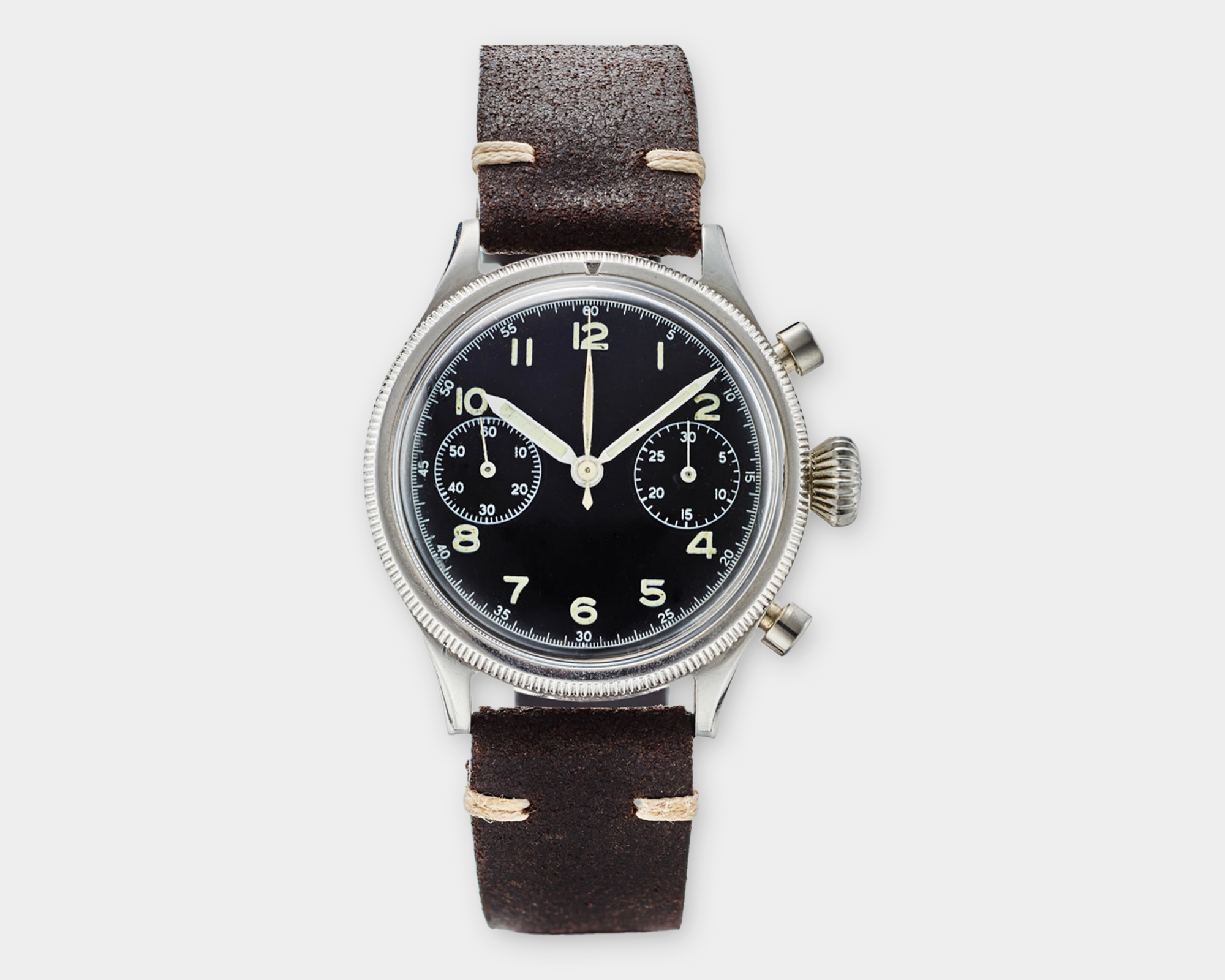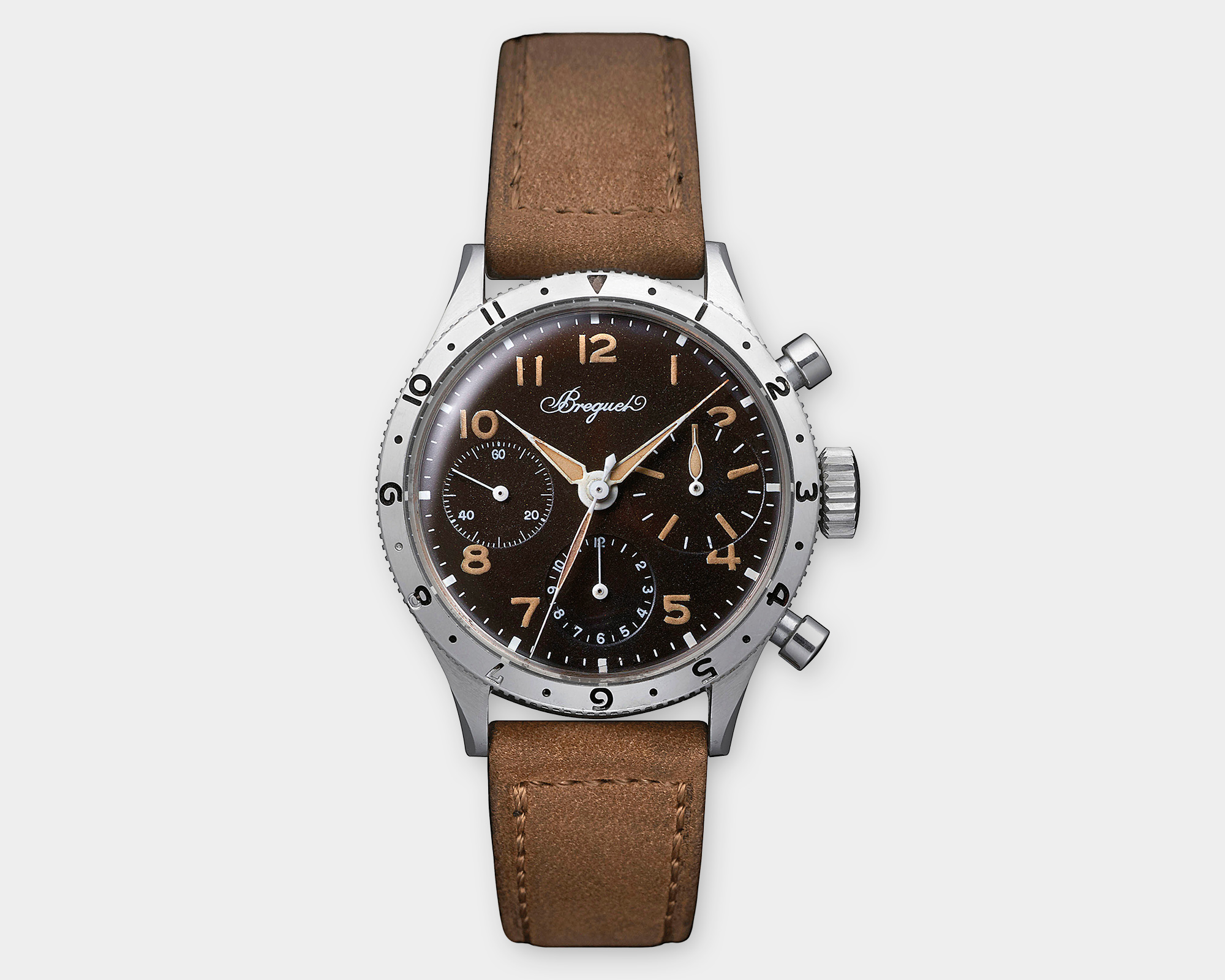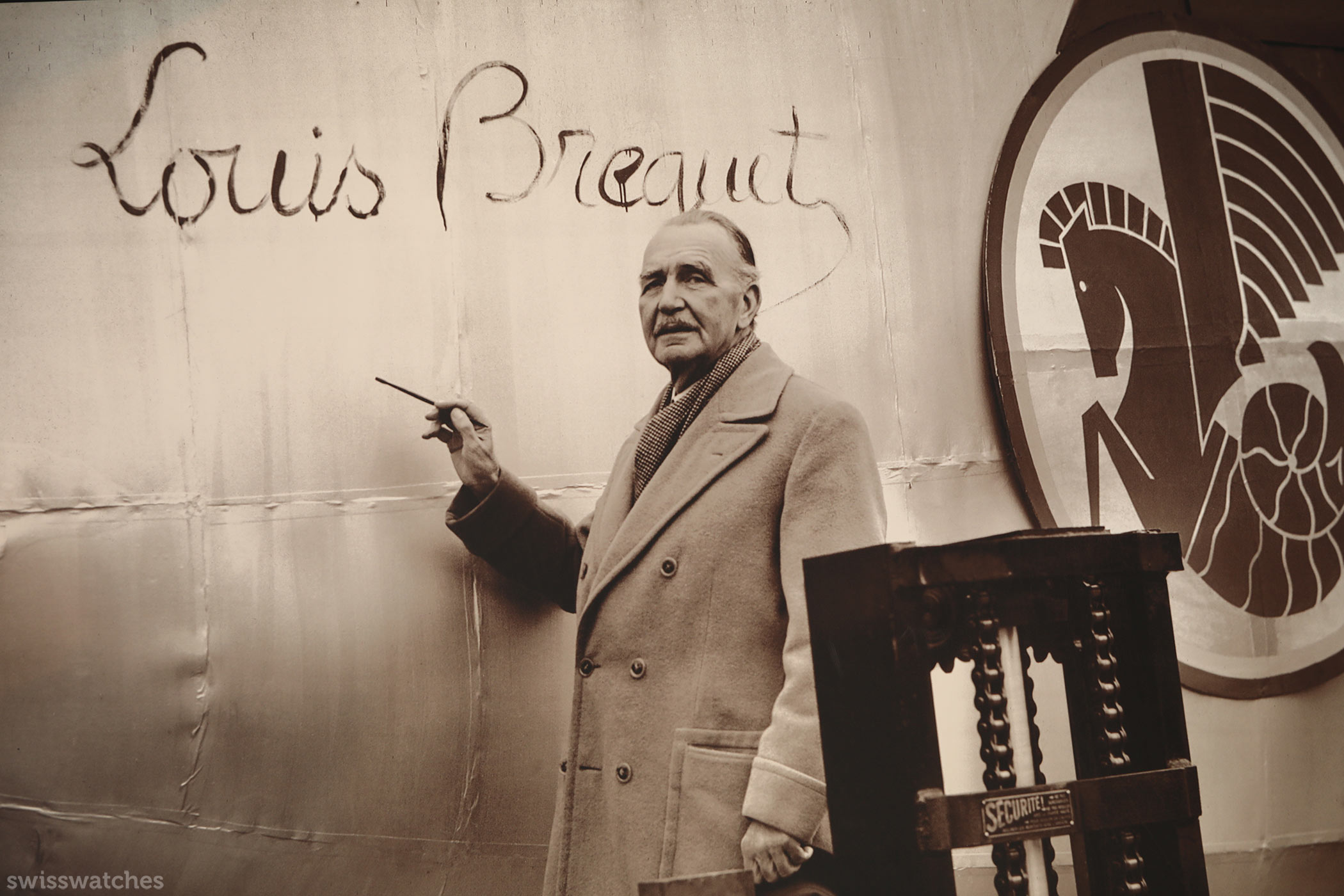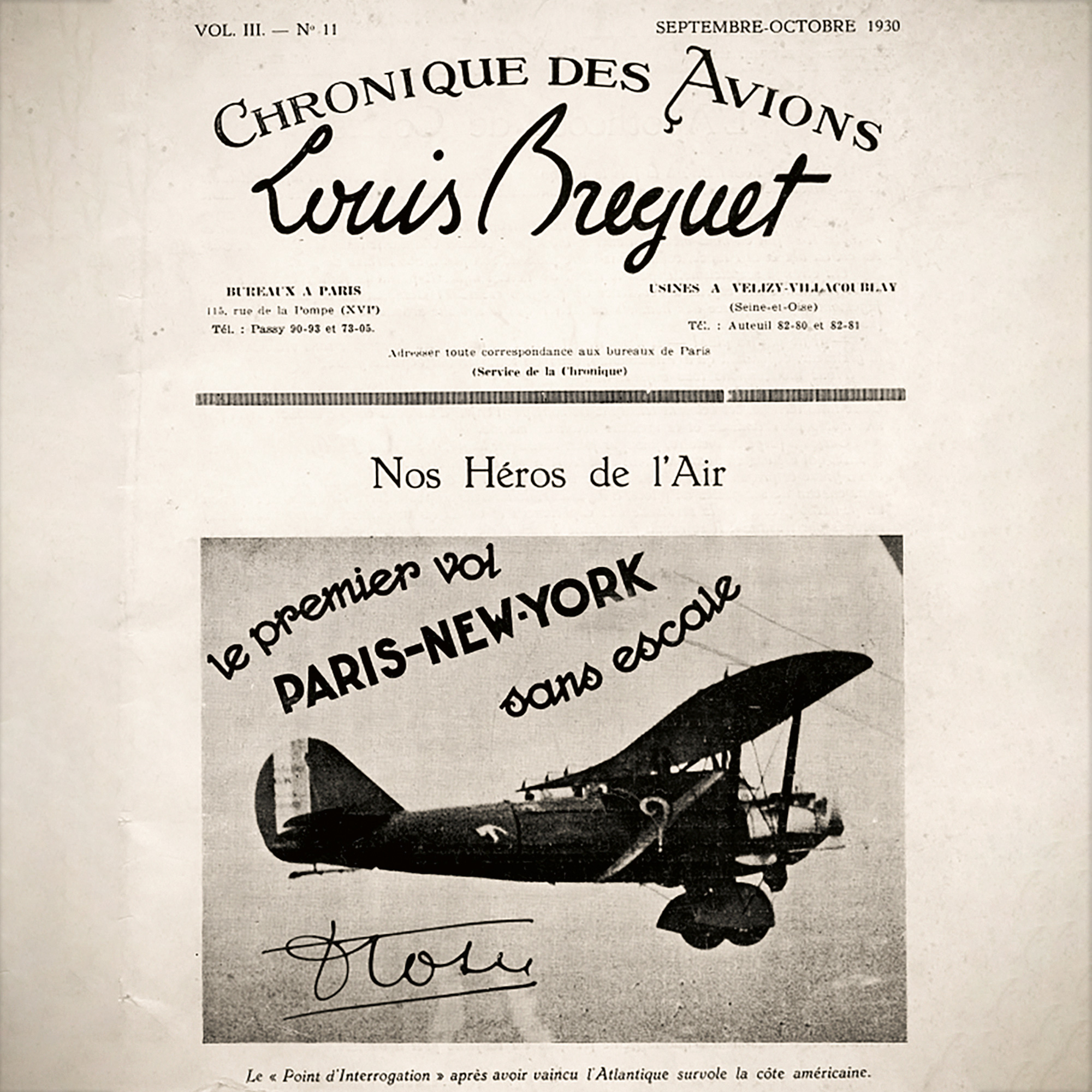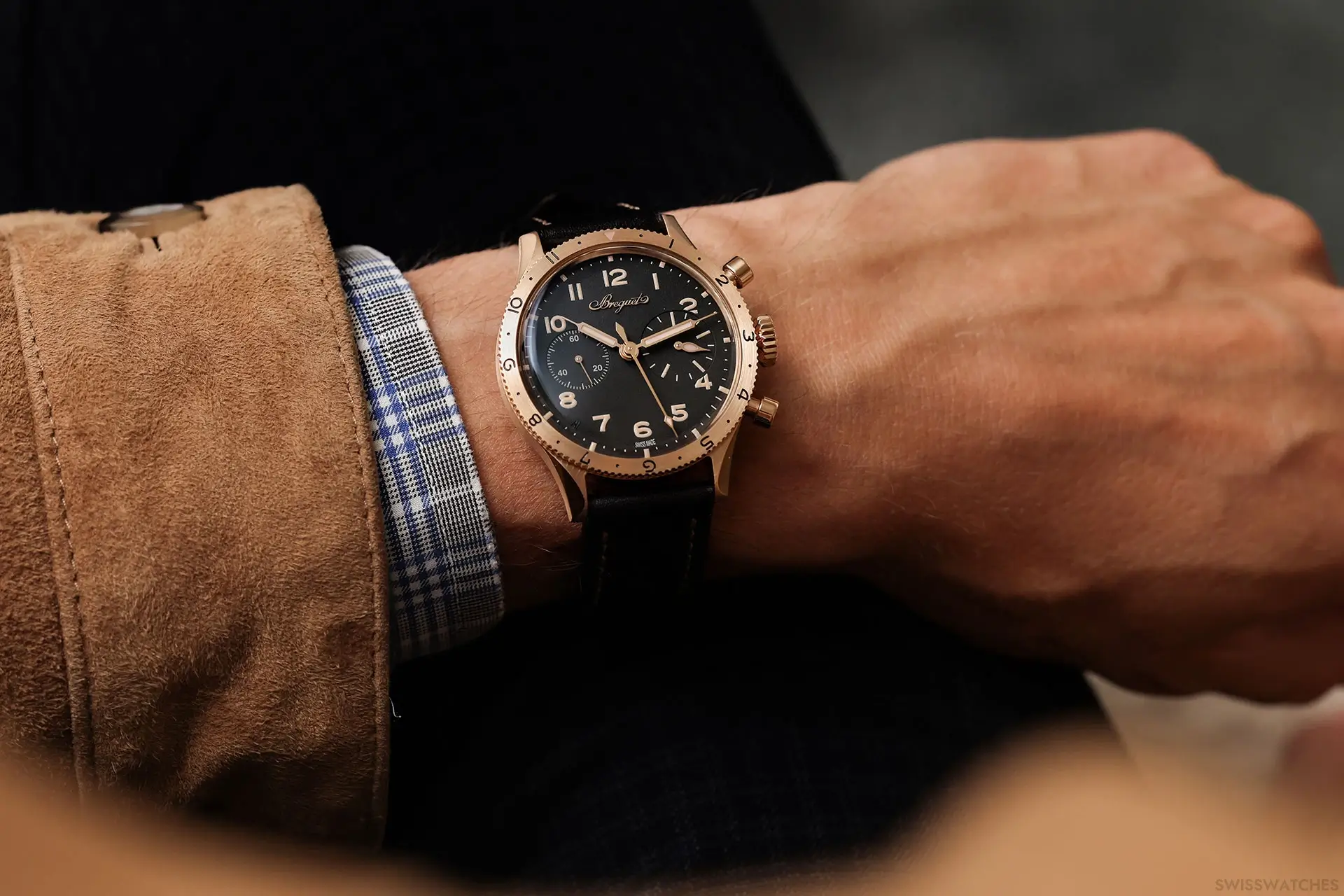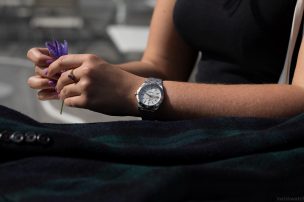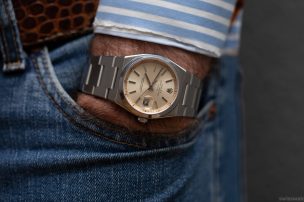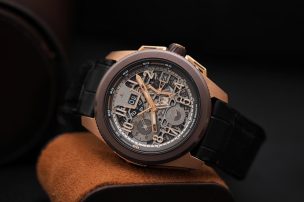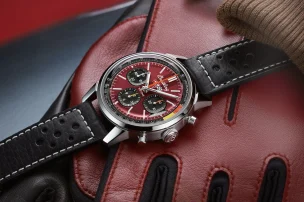
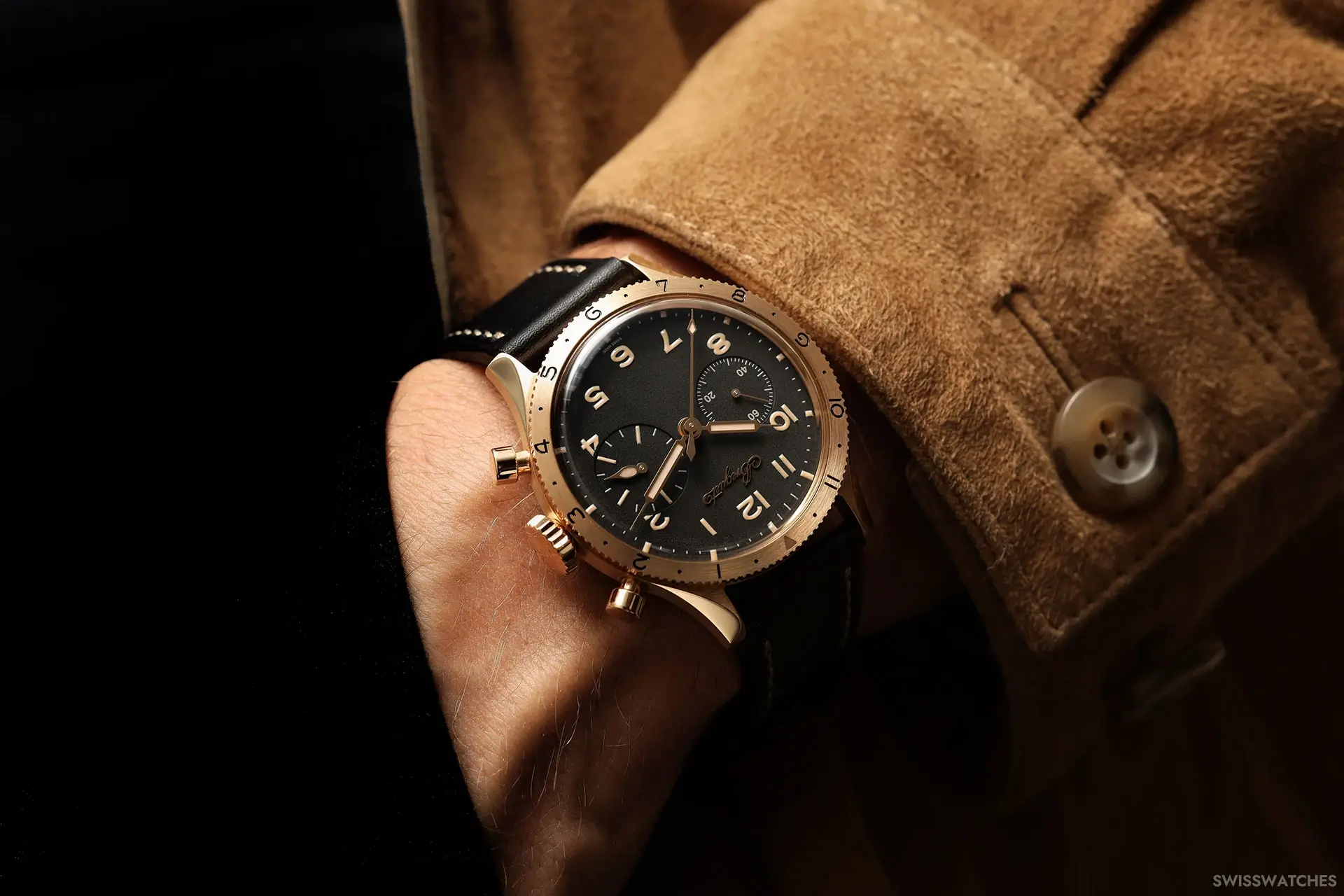
A Closer Look: Breguet’s Type XX Chronographe 2075 – a Contemporary Anniversary Model Presents Itself in Two Versions
Breguet is celebrating its 250th anniversary with the new Type XX Chronographe 2075. With this model, the Maison presents a reinterpretation of its golden Type XX model from the 1950s in two versions.
I must admit: Up until now, my relationship with Breguet watches has been one of neutral coexistence. This changed over the course of this year. By the time the Type XX Chronographe 2075 was released in early June and I had the opportunity to examine it closely, I had left my neutral stance behind. In this article, I’ll explain why.
Breguet is celebrating its 250th anniversary. And yes, some say they expected more from the manufacturer, which has been part of the Swatch Group since 1999. More fanfare, more wow factor. Others such as Vacheron Constantin, Zenith and Audemars Piguet are doing just that.
Breguet celebrates differently. Not quite as loudly and not with a bang, but no less impressively or grandly. Throughout the year, the Maison will delight its enthusiasts – and those who are sure to become fans as the year unfolds – with special reinterpretations drawn from the brand’s iconic past, crafted in Breguet gold. And if things continue as they have so far, the coming months will not see the release of mere copies of earlier models.
Following the Classique Souscription 2025 and the Tradition 7035, the new Type XX Chronographe 2075 is now making its debut, and it is not content with just one anniversary as a reason for its release. With its exquisite materials, it not only commemorates the 250th birthday of its creator, but also the golden pilot’s watches that Breguet launched 70 years ago.
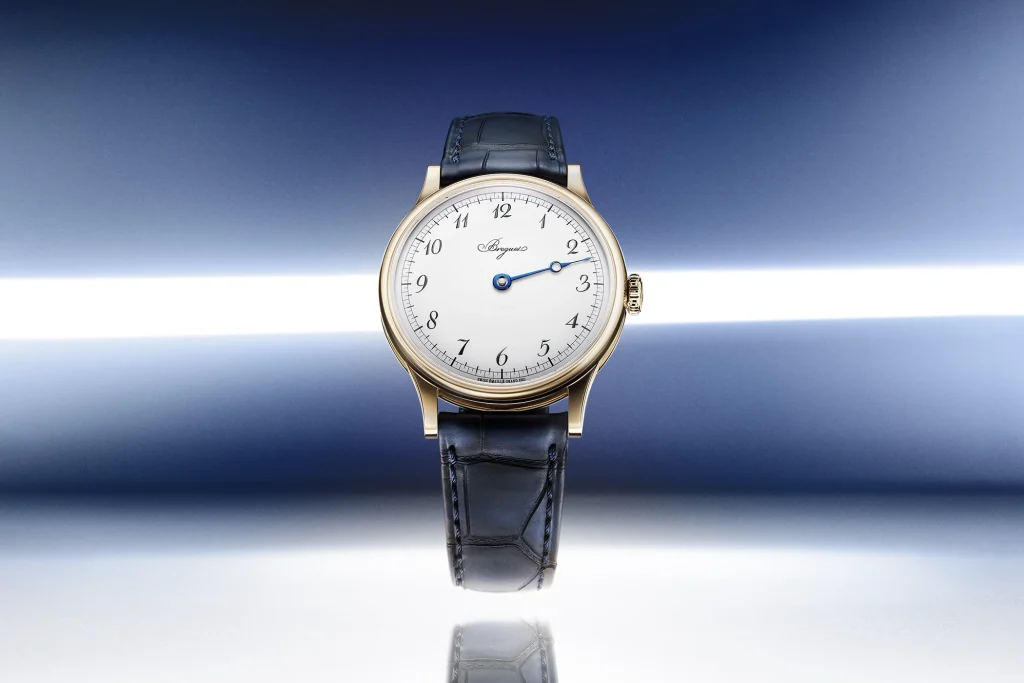
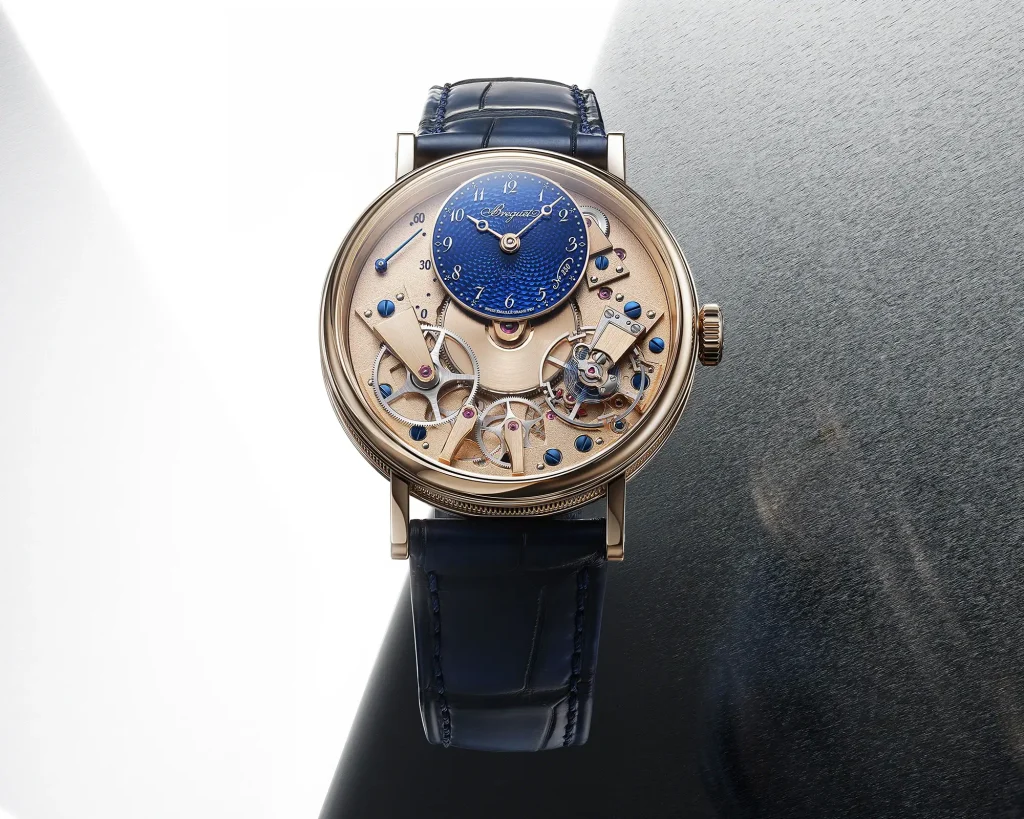
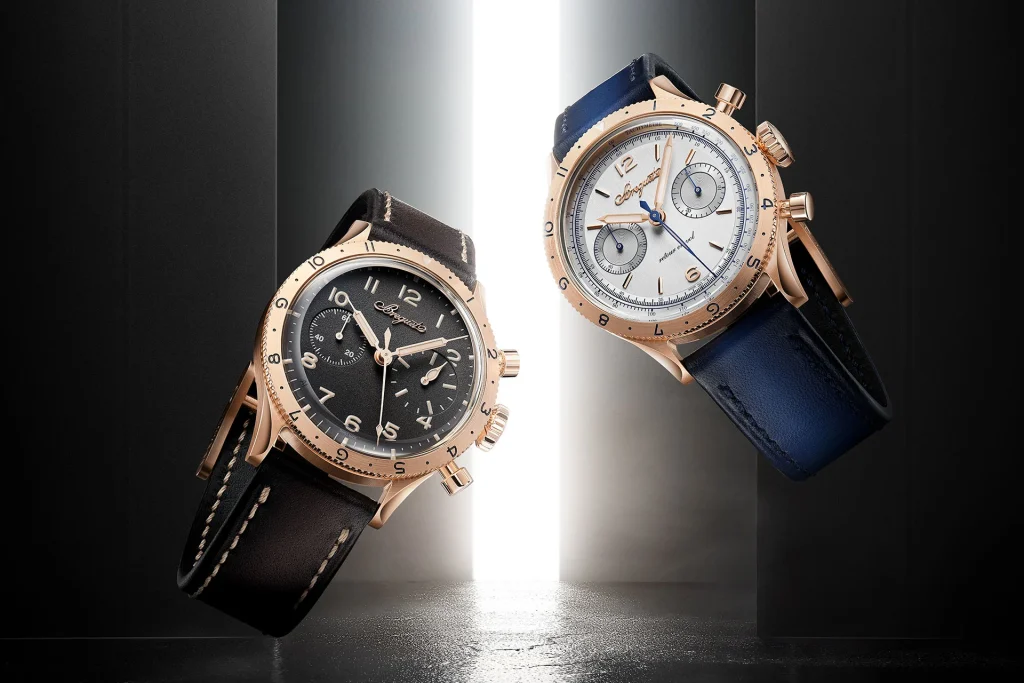
‘In 1955, Breguet actually produced three models with yellow gold cases. This was a rather unusual choice for pilot watches, which were normally made of steel,’ explains Gregory Kissling, who has been overseeing the brand as CEO since October last year and – according to reliable sources – has big plans for the future. The brand definitely deserves a future that is as impressive as its past. And that future has already begun.
‘During our anniversary year, we will be launching a series of timepieces, each of which is linked to a specific invention from Breguet’s long history, dating back to the brand’s founding in 1775,’ Gregory Kissiling revealed in his CEO Talk with Swisswatches Magazine.
The Breguet anniversary marks the beginning of an exciting future
What has already become apparent under Gregory Kissling’s brief leadership is evident of his keen sense of aesthetics and balanced proportions, which he successfully brought to Breguet after more than 16 years at Swatch Group sister brand Omega, most recently as Vice President of Product Development.
What has already become apparent during Gregory Kissling’s brief tenure at the helm reflects his strong sense of aesthetics and balanced proportions, qualities he successfully brought to Breguet’s Swatch Group sister brand Omega for over 16 years, most recently as Vice President of Product Development.
Various perfectly coordinated changes to details, such as the shortened lugs and the omission of the date display, also demonstrate its aesthetic sensitivity in the new Type XX Chronograph 2075.
This creates a first impression that you won’t want to take your eyes off the watch anytime soon – and that applies equally to both the front and the back. Once you put it on, provided your budget allows, you won’t need much persuasion from the salesperson at the jeweller’s. With a very fair price point of less than 45,000 euros – for both the non-limited and the edition limited to 250 pieces – Breguet also makes the decision easier.
Firstly, the chronograph function is a complication that is underestimated by many in terms of its horological complexity. In this case, it is also a flyback variant.
Its protective case is made from exclusive Breguet gold. This alloy, developed in-house, has already been used to enhance the first three anniversary models and, with a few exceptions, will also be the material of choice for the birthday editions that are being released over the course of the year.
The Type XX Chronograph 2075 – a noble trio
In fact, it is a double reinterpretation, as the new Type XX Chronograph 2075 is available in two versions. This reinterpretation is based on a Type XX model from 1955 with a gold case and the number 1780. The dial was originally silver, but was later replaced by a black one. In its new design, Breguet has taken all three elements into account.
‘This allows us to present two products for purists and connoisseurs of the line who are looking for a worthy successor to the watches from the 1950s,’ explains Gregory Kissling.
The case of the Type XX Chronographe 2075 – familiar shape, new gold
Namely, Breguet gold. And this is not just any alloy designed to create a new colour. Although the exclusive 18-carat precious metal is impressive in this regard, with its subtle pink hue, it not only gives the watch a subtle vintage look, but also preserves its own beauty.
It consists of 75 percent gold enriched with silver, copper and palladium, creating a shine that is more resistant to signs of ageing. Marking its debut at the beginning of the year in the anniversary model Classique Souscription 2025, this special material lends an elegant weight to the second birthday model Tradition 7035 and now features with about 50 grams in the Type XX-Chronographe 2075.
The majority of this weight comes from the 5-bar water-resistant case, which, with a diameter of 38.3 millimetres, pays a 1:1 tribute to the 1955 inspiration model. The bidirectional rotating bezel – naturally also made of Breguet gold – performs its role with a civilian gradation, setting it apart from the Type XX models of the last century created for military use, which featured bezels without scales. One of the two Type XX models from 2023 was also equipped with such a fluted, bidirectional rotating bezel.
There are also further differences compared to these timepieces from two years ago. One of these is the aforementioned shortened lugs. Not only do these create harmonious proportions, but also, when combined with the moderate format, provide a high level of wearing comfort – and it is visible. The Type XX Chronograph 2075 sits just as comfortably on slimmer wrists as it does on larger ones. Not only has the diameter been reduced by 3.7 millimetres, but the height of the entire watch has been reduced too. By 0.9 millimetres, to be precise.
The two dials of the Type XX Chronograph 2075
For the dial, Breguet also draws on the 1780 from 1955, which, according to the brand’s archives, originally featured a silver dial that was later replaced by a black counterpart.
With the new Type XX Chronograph 2075, you can – or must – choose between these two colour schemes. However, this does not only apply to black and silver, as there are also significant differences in the dial markings.
However, there is agreement on omitting the date, which in the stainless steel Type XX from 2023 was still positioned between 4 and 5 o’clock, or rather, in my opinion, squeezed in between.
I don’t know about you, but the date is rarely set correctly on my watches. In other words, the date is not a top priority for me. However, delays of several days are not the norm for me.
The similarities between the two new Type XX Chronographe 2075 models are also evident in the curved, applied Breguet lettering in Breguet gold. The baton indices and numerals are also made of this material. However, in the version with a silver dial, the latter only adorn the 12 and 6 o’clock positions.
The dark side of the Type xx Chronographe 2075 – an unlimited premiere
Let’s first take a closer look at the unlimited edition, which in my opinion brings the most successful vintage factor – without appearing old-fashioned. There’s also a premiere. Because aluminum – that’s what this impressive dial is made of – would probably have been the last thing anyone expected from Breguet. And all that in combination with 18-carat gold. This is not only a premiere, but it also has a reason behind it.
Louis Breguet (1880-1975), a gifted aircraft designer and great-grandson of watchmaker Abraham-Louis Breguet, used a new alloy called duralumin, containing 95 per cent aluminium, for his aircraft. The discreet lettering ‘Al’ between 7 and 8 o’clock refers to this lightweight material.
Let’s talk about the colour black: technically a non-colour, but that’s not the point here. To get as close as possible to the dark model from the 1950s, Breguet used the latest anodizing technology. Not only does it look great, but the oxide layer also provides comprehensive corrosion protection – that is, high mechanical strength – which is also used in aerospace.
The black serves as a canvas for easy readability. This is ensured by beige luminescence (glows in green) on the Arabic numerals and indices of the minute track and the 15-minute counter at 3 o’clock, on the hour and minute hands made of Breguet gold, and on the gold-plated chronograph hand. The small seconds hand at 9 o’clock is made of pure Breguet precious metal.
The price of this Type XX Chronograph 2075 is 42,400 euros.
The silver Type XX Chronograph 2075 with tachymeter scale
The second version of the Type XX Chronograph 2075 combines a precious metal case with a matching dial. We are talking about 925 sterling silver, vertically brushed for an elegant appeal. To avoid any misunderstandings regarding the noble and substantial materiality, there is a subtle clarification in the form of an engraved inscription at 7 and 8 o’clock: Ag925.
Furthermore, this version – which, in my opinion, triggers less immediate emotionality – is limited to 250 pieces, paying homage to the original with its silver-coloured dial through its choice of materials.
The Arabic numerals and indices made of Breguet gold here are not equipped with luminous material, but this can be found in beige (green luminescence) on the golden hour and minute hands as well as on the blued steel chronograph hand. The 30-minute hand at 3 o’clock and the small seconds indicator at 9 o’clock are also made of blued steel.
Unlike the version with a black dial, this limited edition also features the words ‘retour en vol’, referring to the flyback chronograph function and offering an additional feature in the form of a tachymeter scale.
The Type XX Chronographe 2075 comes with a price tag of 44,200 euros.
Two powerful movements
While the two hand-wound calibres in the new Type XX Chronograph 2075 are not new, they have undergone further development. The 7279 calibre in the black dial version and the 7278 calibre in the silver version are both based on the 728 calibre. After four years of development, the 728 calibre powered the Type XX Chronograph 2067 with automatic energy in 2023.
The anniversary timepieces, on the other hand, are wound by hand, which undoubtedly enhances the historical feel. In terms of frequency, they all oscillate at a brisk 5 hertz. The high oscillation frequency increases the precision of the time display and the chronograph, which also offers the practical flyback function.
Pressing the lower pusher at 4 o’clock immediately resets the chronograph to zero and starts a new time measurement. This complication originated from the requirements for safe flight navigation before radio and satellite-based systems existed.
‘This feature, which was required by the official aviation authorities in the 1930s and 1940s and is not an invention of Breguet, has been used in all Type XX chronographs since 1954, as well as in various chronograph models for aircraft instrument panels,’ explains Emmanuel Breguet, Vice President, Head of Patrimony and descendant of Breguet founder Abraham-Louis Breguet.
The calibre 7279 consists of 258 parts and the 7278 of 257 parts. Both offer a 60-hour power reserve.
The caseback – beauty at second glance
Equipped with a sapphire crystal engraved with ‘Breguet 250 Years’ and an anti-reflective coating, the view from the back of both watches not only allows an unobstructed look at the workings of both movements.
All of this fades into the background when you see the bridge, which has been meticulously hand-engraved in the manufacturer’s workshops. The engraving depicts the Breguet 19 aircraft flying over the Atlantic, showing the exact flight path of the first transatlantic flight from Paris to New York in 1930. There is also a frosted view of the European and North American coastlines. Once again, Breguet has succeeded in providing an authentic contemporary perspective, which is pleasing to the eye despite all the historical references.
The Type XX Chronographe 2075 with a black dial comes with an anthracite-coloured calfskin strap featuring a dégradé effect, while the version with a silver dial comes with a blue calfskin strap. Both feature an 18-carat Breguet gold buckle and can be easily replaced without the need for tools.
Type XX – the journey continues
The second generation Type XX, launched in 1971, distinguishes itself through its large polished steel case, chunky lugs and black bezel. It featured a 15-minute counter and was available with or without a 12-hour counter. Production of this model ceased in 1986, only to be revived in 1995 with a black dial and automatic movement.
Numerous colour and material variations as well as additional functions completed the family in the following decades.
From 2023 onwards, Breguet then – fortunately – returned to the roots of the Type XX and once again aligned itself more closely with the iconic models of the first generation.
Incidentally, the two golden Type XX Chronographe 2075 anniversary timepieces are merely one stage in the journey of this line, as Gregory Kissling emphasises:
‘Following the launch of steel and gold models that can be worn with a wide range of straps, the possibilities are far from exhausted, especially as the collection is aimed at a broad audience with different tastes. The options are endless, especially when you play around with diameters, finishes and materials. This means that the collection can be expanded gradually.’
Breguet’s role in the history of aviation
Pilots in the middle of the last century had to ensure redundancy. They did this by wearing another timepiece on their wrist in addition to the on-board chronograph. If one watch stopped working, the other would take over its functions. Breguet took this into account when developing the Type XX chronographs.
This collection has enjoyed cult status for around 70 years now and has shaped the history of aviation. Whether as a precision instrument on the wrists of pilots or enthusiasts who appreciate the characteristics of the Type XX even without any aviation ambitions.
However, the manufacturer’s involvement in aviation began as early as the 1930s. At that time, it produced specialised products such as aerodrome and on-board chronometers. But it was also during this period that chronographs with split-seconds hands were first developed for the wrist, and from 1935 onwards, these were also available in steel.
In the early 1950s, Breguet finally fulfilled the French Air Force’s request to equip its pilots and navigators with a robust wrist chronograph with special features. It was to have a black dial with luminous numerals and hands, as well as a high-quality movement that could withstand pressure fluctuations and acceleration.
The wish list also included a rotating bezel, dust- and moisture-proof cases with screw-down casebacks, high shock resistance, onion crowns, magnetism and temperature resistance, a rotating bezel with luminous markings, and luminous hands. From a functional point of view, the chronograph function with flyback was particularly important for safe navigation. Since then, all Type XX models from Breguet have been equipped with this complication.
However, the first timepieces delivered to the Luftwaffe at that time were called Type 20 and had a bezel without a scale. The versions for civilian use were designated Type XX, a label which has been used for all applications and variants since 1957.
Type XX Chronograph 2075 – a triple tribute
The two new Type XX Chronograph 2075 models are a triple tribute to true pioneers who explored time and space and shaped the history of watchmaking and aviation to an extent that cannot be overestimated:
These are Abraham-Louis Breguet, the founder of the eponymous watchmaking company; his great-great-grandson, Louis Breguet, an aircraft designer; and the piloting duo, Dieudonné Costes and Maurice Bellonte, who were the first to fly non-stop from Paris to New York.
The amazing story of the Breguet family
Abraham-Louis Breguet (1747-1823) was one of the greatest watchmakers of his time. Without his innovative spirit, the world of watchmaking would look very different today. However, his great-great-grandson, Louis Breguet (1880-1955), was drawn to the skies.
At the beginning of the 20th century, for example, he designed one of the first experimental helicopters capable of taking off with one passenger on board – a masterpiece of engineering at the time.
As a graduate engineer from the École Supérieure d’Electricité, he finally founded the aviation company Breguet Aviation in 1911, which was to play a significant role in the development of military and civil aviation. During the First World War, Breguet produced a large number of bomber and reconnaissance biplanes.
Among them was the famous Breguet 19, which was often used for long-distance flights and is now on display at the Musée de l’Air et de l’Espace in Le Bourget. In 1930, the aviation duo Dieudonné Costes (1892-1974) and Maurice Bellonte (1896-1984) completed the first direct flight from Paris to New York aboard the Breguet 19 Super Bidon Point d’Interrogation, which had been specially modified for the occasion. Three years earlier, Charles Lindbergh had already mastered the opposite route, but a flight from east to west was and still is considerably more difficult due to headwinds.
In the post-war period, Louis Breguet became involved in commercial aviation and contributed to the founding of Air France, among other things.
Although the Breguet family sold the watch brand to workshop manager Edward Brown in 1870, a close connection developed between the worlds of watchmaking and aviation. ‘It is therefore very likely that Louis Breguet played a key role in sensitising the House of Breguet to the challenge of aviation and thus establishing this extremely successful connection,’ says Emmanuel Breguet.
Another famous member of the Breguet family is one of the 72 names inscribed in gold letters on the first-floor frieze of the Eiffel Tower. ‘The Breguet name on the Eiffel Tower refers to the watchmaker and physicist Louis-Clément Breguet (1804–1883), a pioneer in telegraphy and electricity. He was the grandson of Abraham-Louis and the grandfather of Louis,’ explains Emmanuel Breguet.
A passion for mechanics and construction, as well as a spirit of innovation, are clearly part of the Breguet family’s DNA. To this day, this is reflected in the creations of the Breguet watch manufacturer. I am already looking forward to the other anniversary editions.
